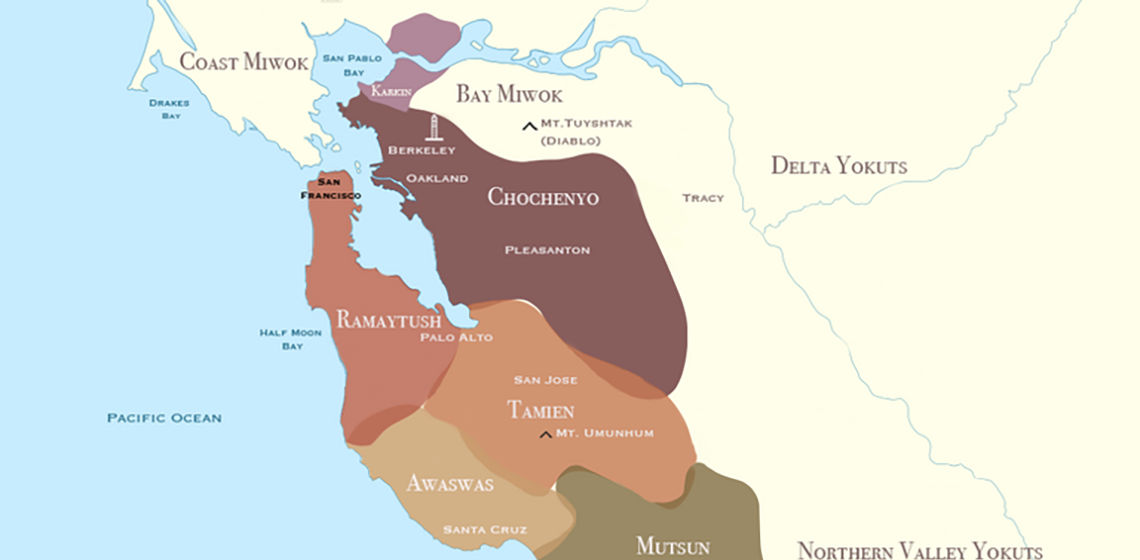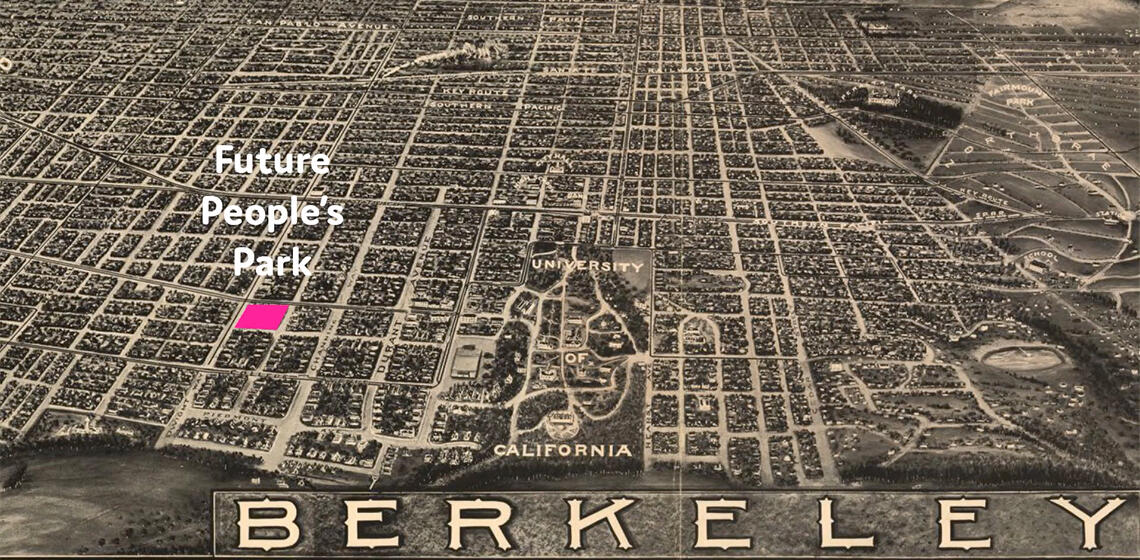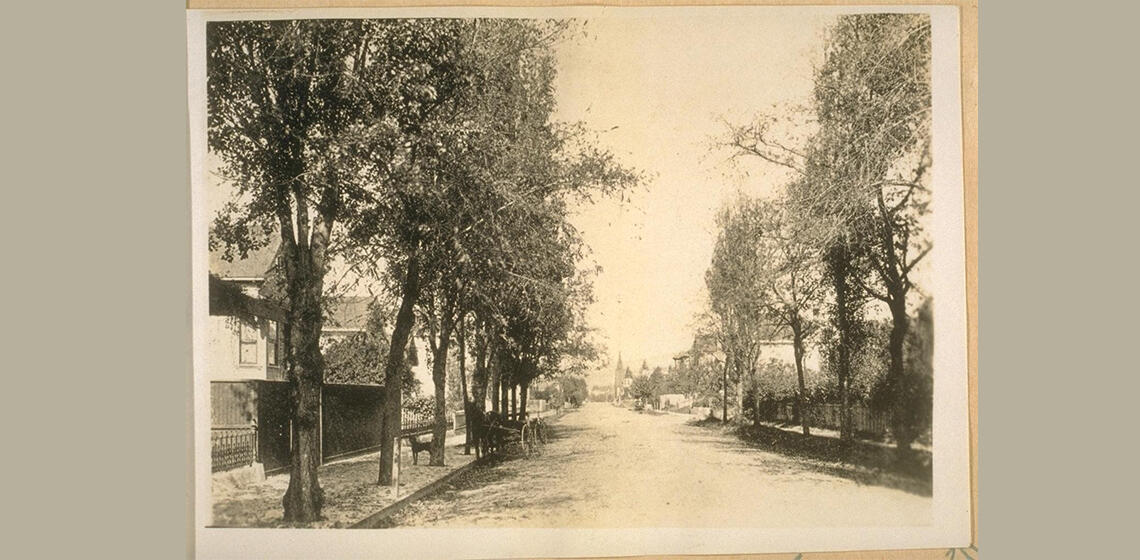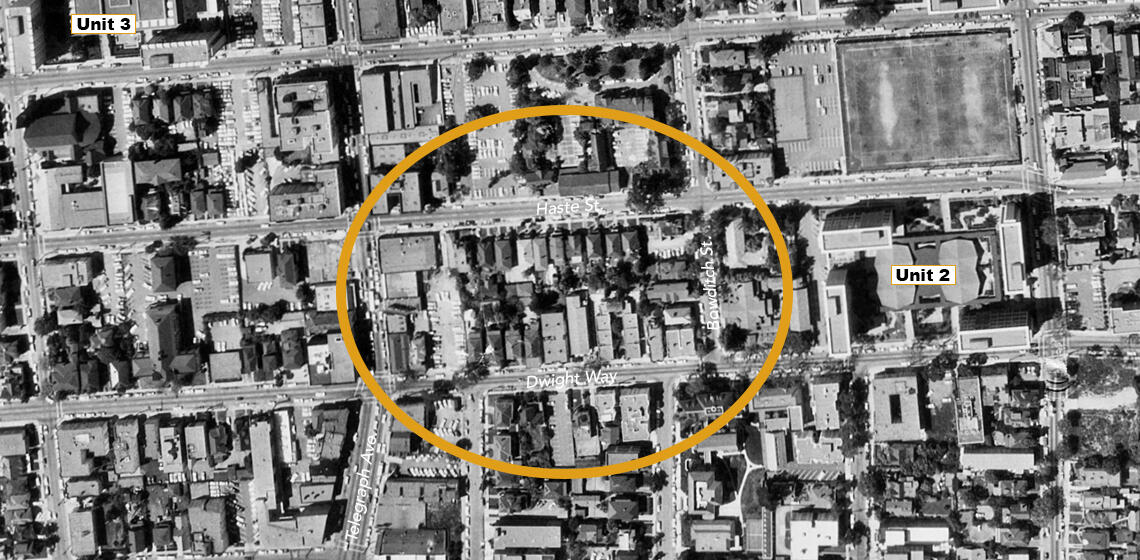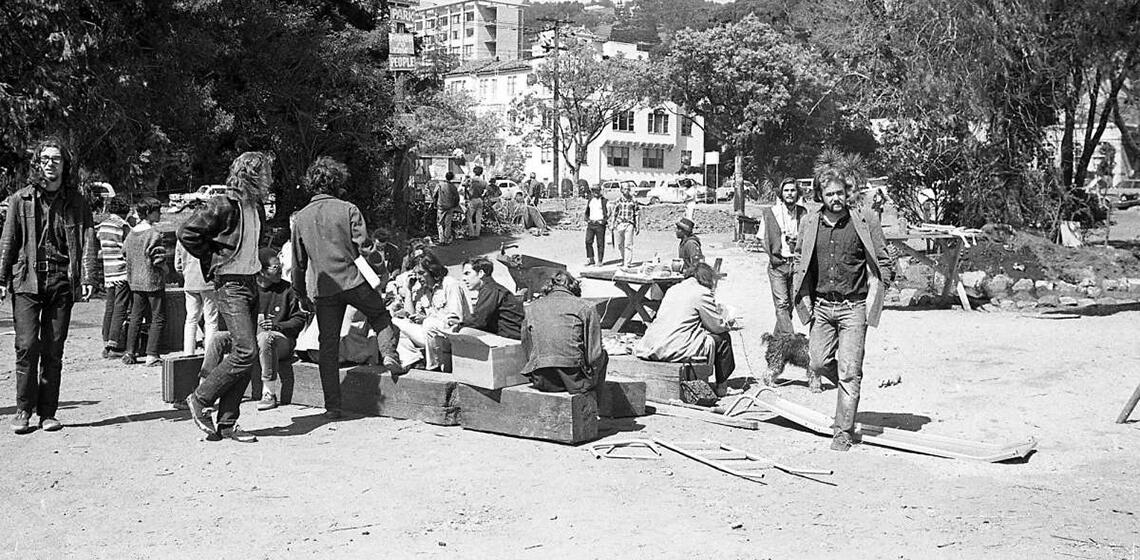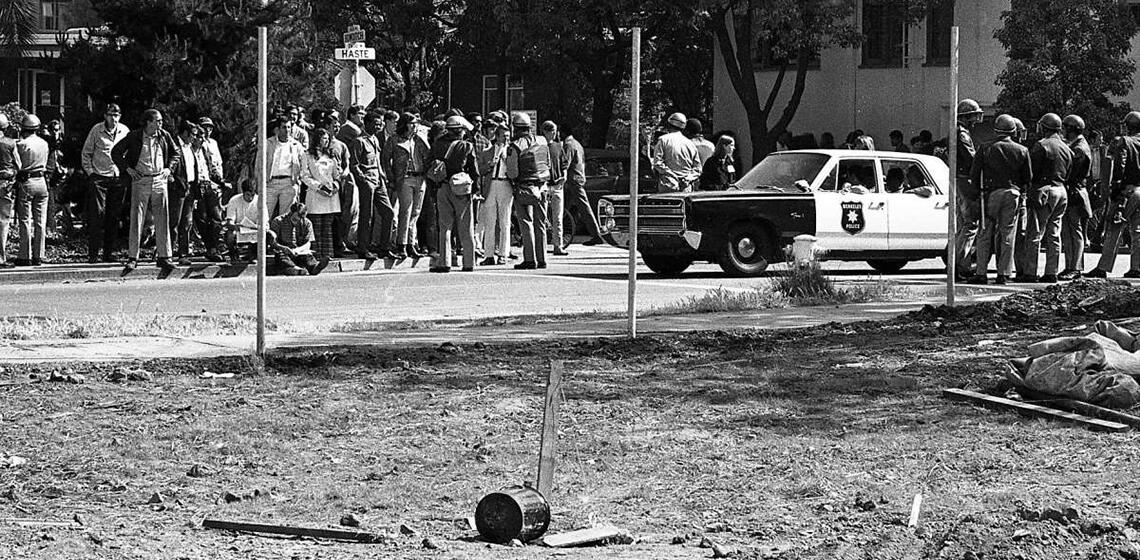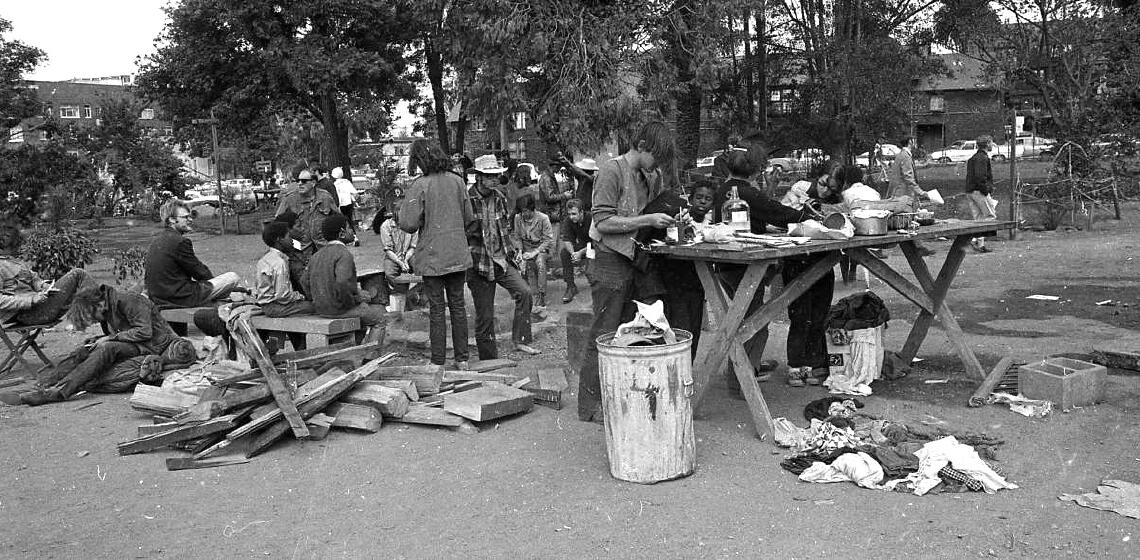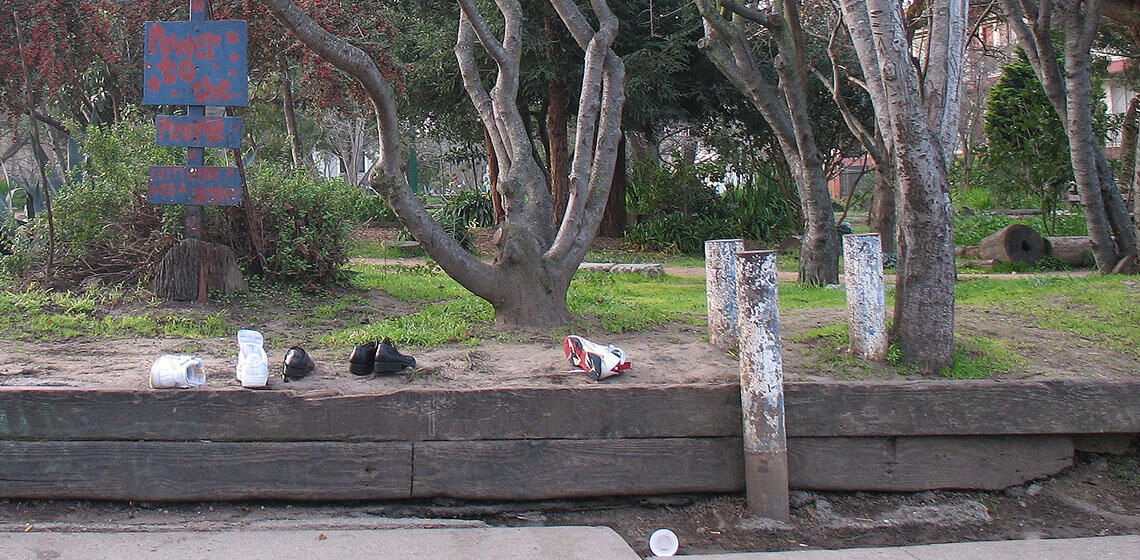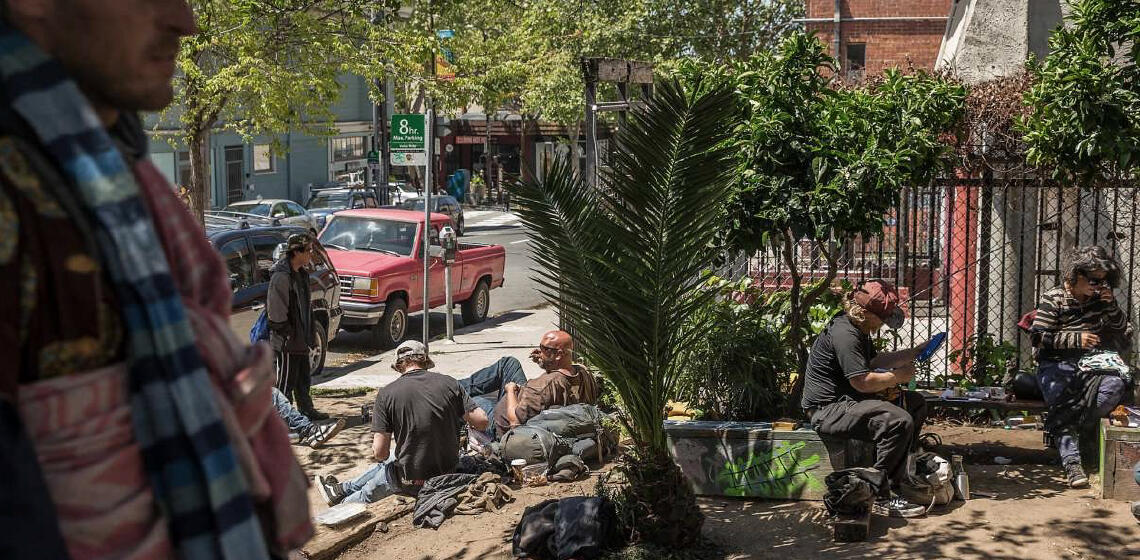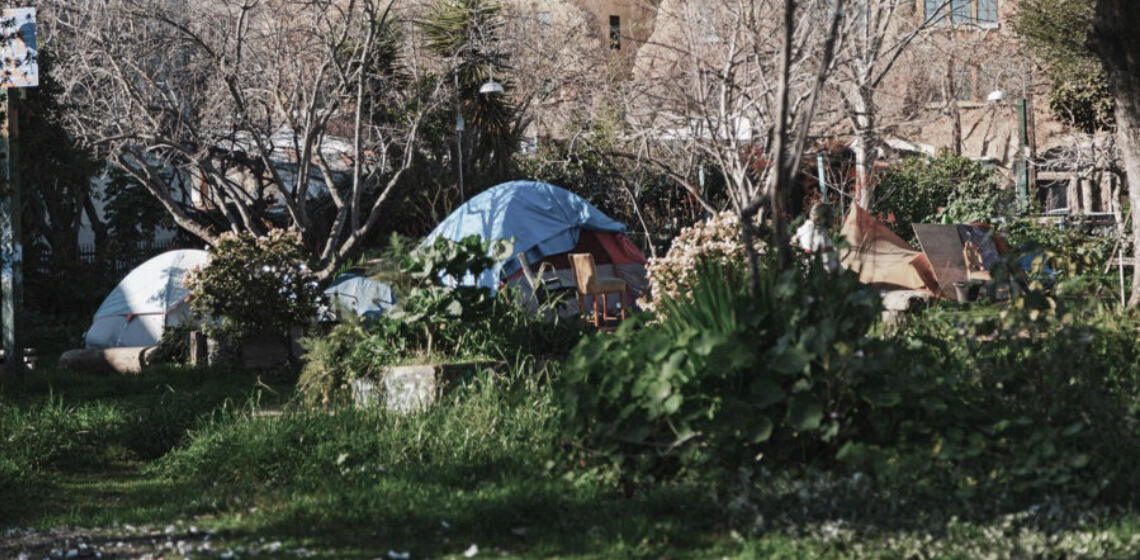The design of this project, and in particular the revitalized 1.7-acre park, will recognize the many historic chapters that, together, comprise the legacy of this site through a commemoration program.
Through our multiyear public engagement process for this project, we've talked with hundreds of people and listened to their ideas on how to most appropriately commemorate the storied history of the site, from land originally inhabited by native peoples thousands of years ago, to turn-of-the-century residential housing development, and through the protests of the 1960s and the subsequent creation of a park, to today.
Rendering: Walkway Concept

The commemoration program is in development and many ideas are being explored to share the history of the site through all three elements of the project: the landscape, supportive housing, and student housing.
Samples of ideas in consideration are a memorial walkway that mimics the path of protestors walked in May 1969, murals or commemorative designs on the exterior of the buildings, displays of historic photos, and themed student housing floors around the topics of social justice, sustainability, and caring for the natural and human habitat.
Outdoor elements that commemorate and share the history of the site will be coordinated by Walter Hood, landscape architect and MacArthur Genius Grant-winning UC Berkeley Professor, and his studio, Hood Design
Hood Design is a cultural practice committed to creating environments in which people live work, and play. The studio practice engages urban landscape where a collective density of inhabitants share physical, social, political, and economic resources. This multidimensional context is the setting for the development of powerful sculpted expressions that explore site-specific social and environmental processes.


